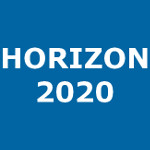OptoSkin: novel LIDAR touch sensors for detection of touch and pressure within wave guides
Bacher, Emmanuel ; Cartiel, Sergio (Universidad de Zaragoza) ; García-Pueyo, Jorge (Universidad de Zaragoza) ; Stopar, Julija ; Zore, Aleš ; Kamnik, Roman ; Aulika, Ilze ; Ogurcovs, Andrejs ; Grube, Jurgis ; Bundulis, Arturs ; Butikova, Jelena ; Kemere, Meldra ; Muñoz, Adolfo (Universidad de Zaragoza) ; Laurenzis, Martin
Resumen: Light Detection and Ranging (LIDAR) sensors, employing direct Time-of-Flight (dTOF) measurements, are crucial for precise surface localization and are increasingly integrated into compact chip designs. These sensors have extensive use in proximity sensing in various applications. This paper presents the innovative use of LIDAR sensors for ranging within wave guides to accurately detect touch and pressure. In our OptoSkin sensors, light propagates via total internal reflection (TIR) within the wave guide. Then it is reflected back to the sensor as a result of wave guide deformation and/or scattering in the contact area, a phenomenon attributed to frustrated total internal reflection (FTIR). We have designed, simulated, and implemented different OptoSkin sensors using wave guides constructed from a flexible rod, rigid curved 3D printed resin, and planar soft silicone rubber, respectively. Each configuration is equipped with multiple LIDAR sensors, demonstrating effective localization of touch points. In addition, pressure sensing was performed on the elastic wave guides. These novel touch sensors show great potential for applications such as robotic sensor skins, which enhance tactile responsiveness and interaction.
Idioma: Inglés
DOI: 10.1109/JSEN.2024.3443615
Año: 2024
Publicado en: IEEE SENSORS JOURNAL 24, 20 (2024), 33268-33280
ISSN: 1530-437X
Financiación: info:eu-repo/grantAgreement/EC/HORIZON EUROPE/101070310/EU/Physical Cognition for Intelligent Control and Safe Human-Robot Interaction/Sestosenso
Financiación: info:eu-repo/grantAgreement/EC/H2020/739508/EU//CAMART2
Tipo y forma: Artículo (Versión definitiva)
Área (Departamento): Área Lenguajes y Sistemas Inf. (Dpto. Informát.Ingenie.Sistms.)
 Debe reconocer adecuadamente la autoría, proporcionar un enlace a la licencia e indicar si se han realizado cambios. Puede hacerlo de cualquier manera razonable, pero no de una manera que sugiera que tiene el apoyo del licenciador o lo recibe por el uso que hace. No puede utilizar el material para una finalidad comercial. Si remezcla, transforma o crea a partir del material, no puede difundir el material modificado.
Debe reconocer adecuadamente la autoría, proporcionar un enlace a la licencia e indicar si se han realizado cambios. Puede hacerlo de cualquier manera razonable, pero no de una manera que sugiera que tiene el apoyo del licenciador o lo recibe por el uso que hace. No puede utilizar el material para una finalidad comercial. Si remezcla, transforma o crea a partir del material, no puede difundir el material modificado.
Exportado de SIDERAL (2024-12-20-12:05:30)
Visitas y descargas
Idioma: Inglés
DOI: 10.1109/JSEN.2024.3443615
Año: 2024
Publicado en: IEEE SENSORS JOURNAL 24, 20 (2024), 33268-33280
ISSN: 1530-437X
Financiación: info:eu-repo/grantAgreement/EC/HORIZON EUROPE/101070310/EU/Physical Cognition for Intelligent Control and Safe Human-Robot Interaction/Sestosenso
Financiación: info:eu-repo/grantAgreement/EC/H2020/739508/EU//CAMART2
Tipo y forma: Artículo (Versión definitiva)
Área (Departamento): Área Lenguajes y Sistemas Inf. (Dpto. Informát.Ingenie.Sistms.)
Exportado de SIDERAL (2024-12-20-12:05:30)
Enlace permanente:
Visitas y descargas
Este artículo se encuentra en las siguientes colecciones:
Artículos > Artículos por área > Lenguajes y Sistemas Informáticos
Registro creado el 2024-10-03, última modificación el 2024-12-20
